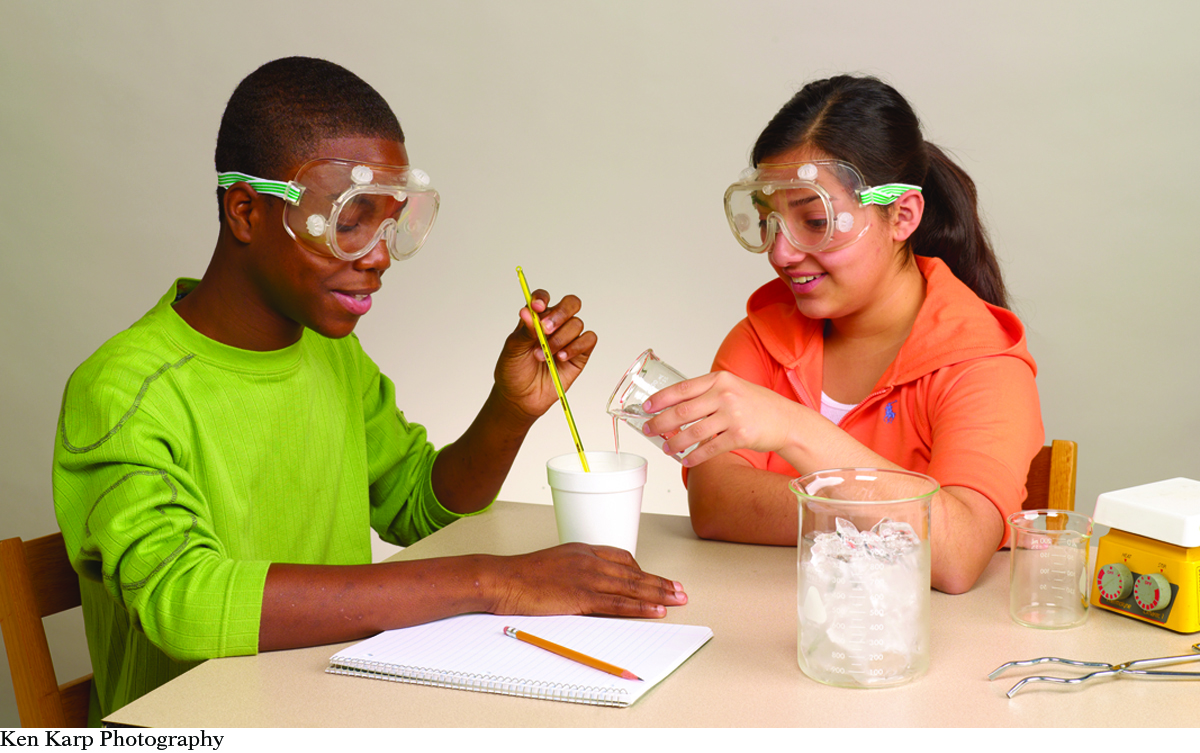Featured LAB: Heat Transfer
Featured LAB
494
Heat Transfer
Purpose
To explore the factors that affect heat transfer between two samples of water.
Materials
large foam cup
250 mL beakers (2)
100 mL graduated cylinder
thermometer
hot plate
beaker tongs
ice in a large beaker or plastic tub

Procedure
Measure and record a volume of water. Pour it into the foam cup and record the temperature.
Measure and record a second volume of water. Pour it into a beaker and either heat or cool the water using a hot plate or ice. Record the temperature.
Add the second sample to the first. Stir and watch the thermometer closely. Record the temperature after the temperature has stabilized.
Repeat the experiment using different volumes and temperatures. Create a data table with results from at least three trials.
Convert your volume measurements to mass. The density of water is 1 g/mL.
Analysis
Look for relationships in your data table. What factors affect the temperature change?
Chemists measure the amount of heat transfer from one sample to another in units of calories. A calorie is the amount of energy needed to raise the temperature of 1 g of water by 1 ºC. How does this relate to your data?
Write an equation relating the masses of the two water samples, m1 and m2, and the temperature changes, ΔT1 and ΔT2, of these two masses of water.
Making Sense What happens to the motions of the water molecules if you mix hot and cold water? Use changes in molecular motion to explain how energy from the hot water transfers to the cold water.
If You Finish Early Predict the final temperature if you mix 15 g of water at 20 ºC with 45 g of water at 80 ºC. Show your work.